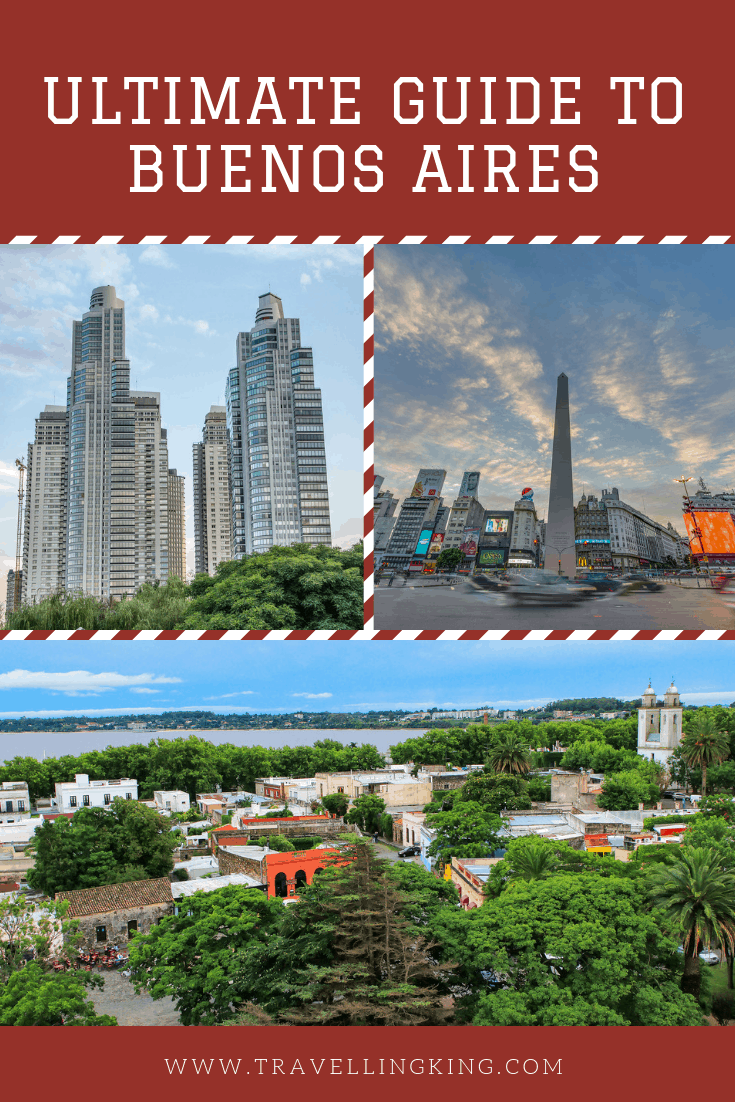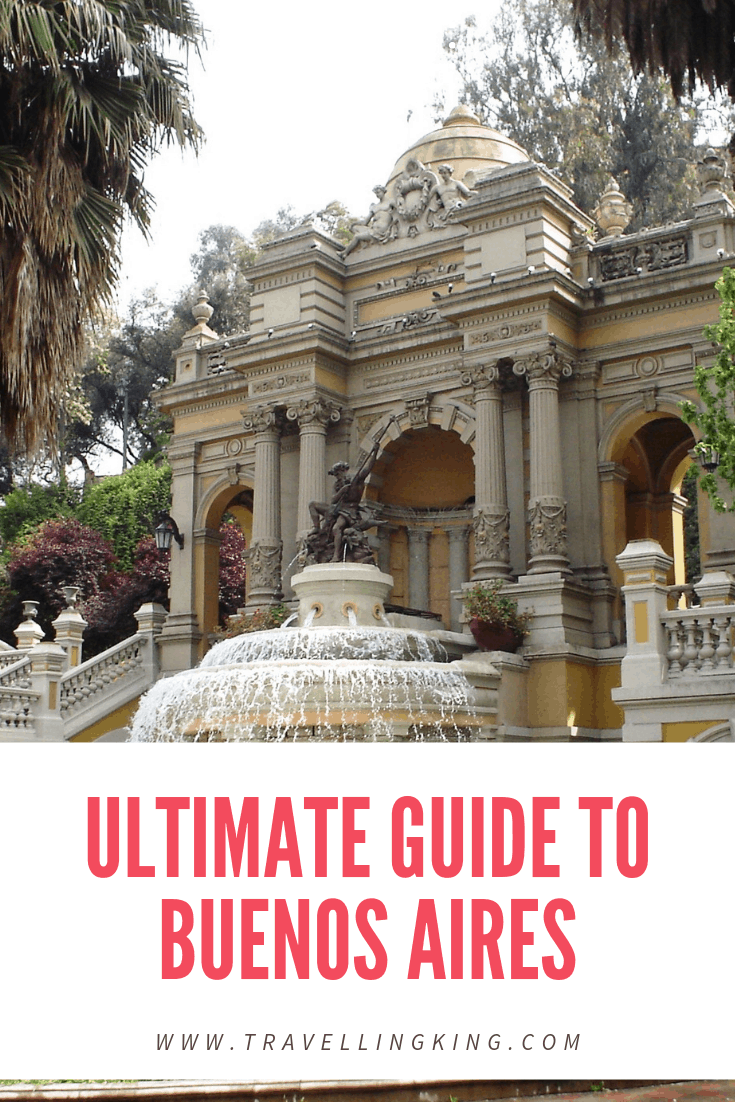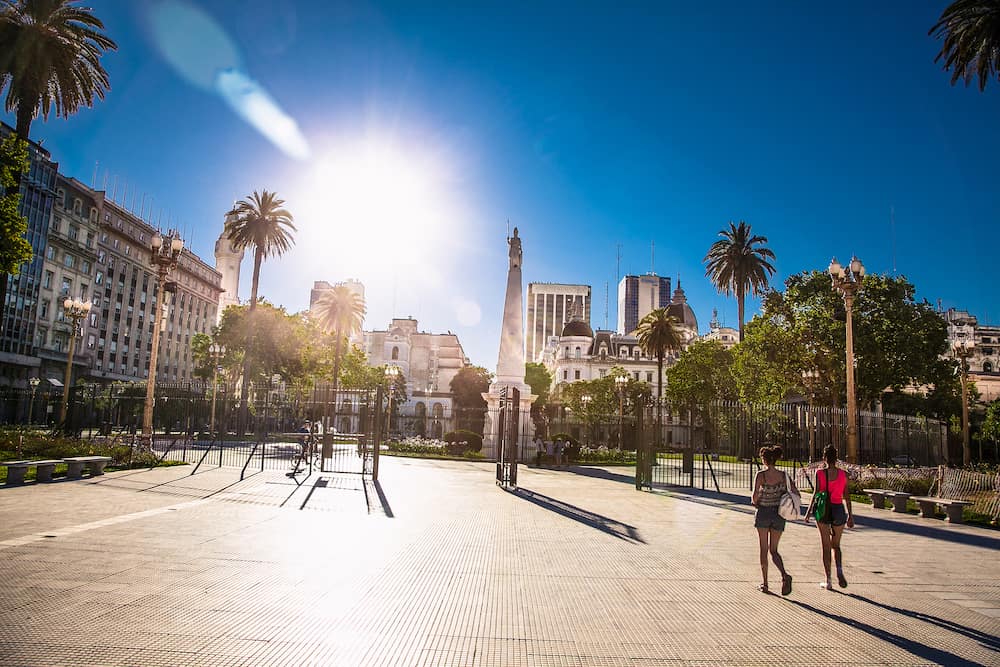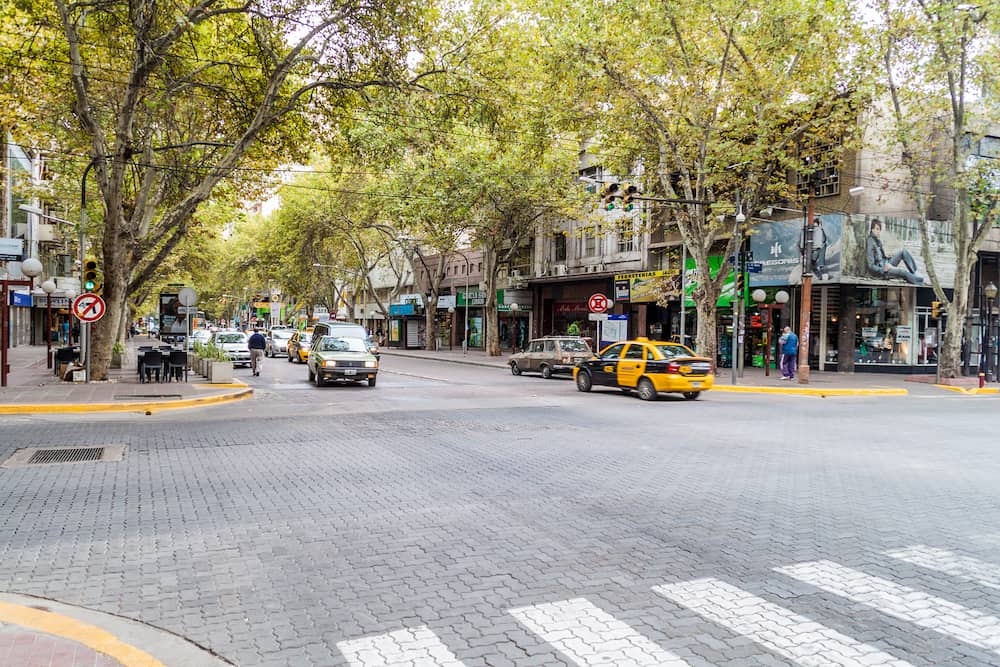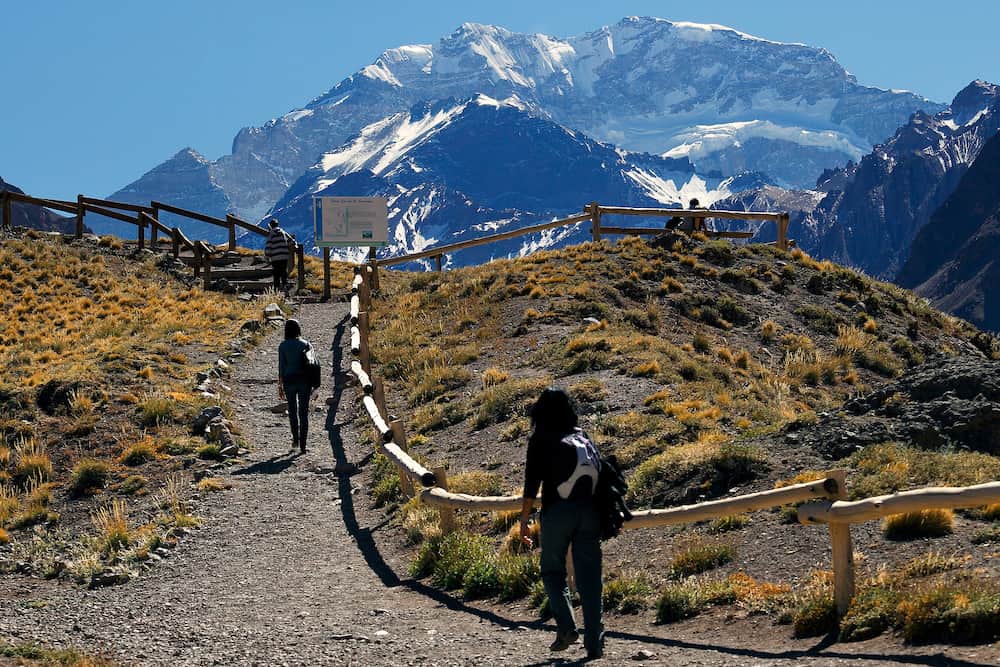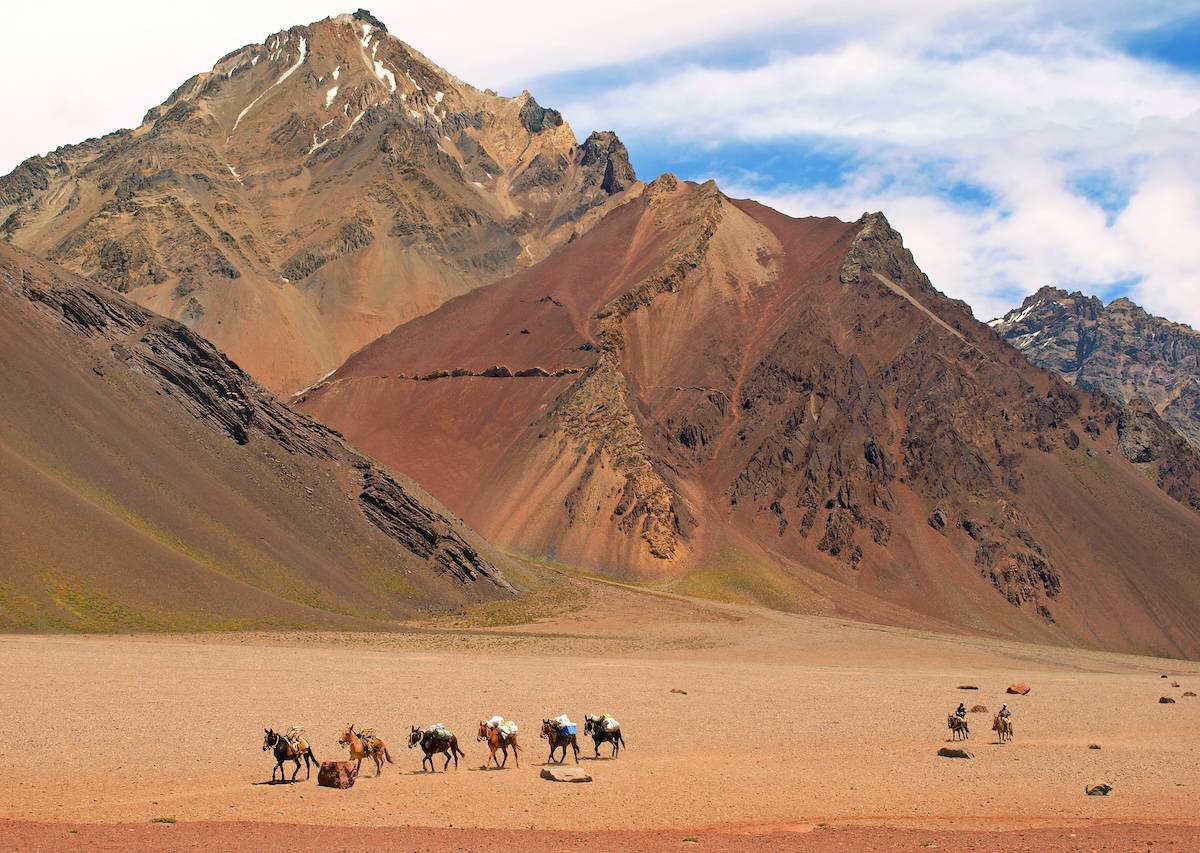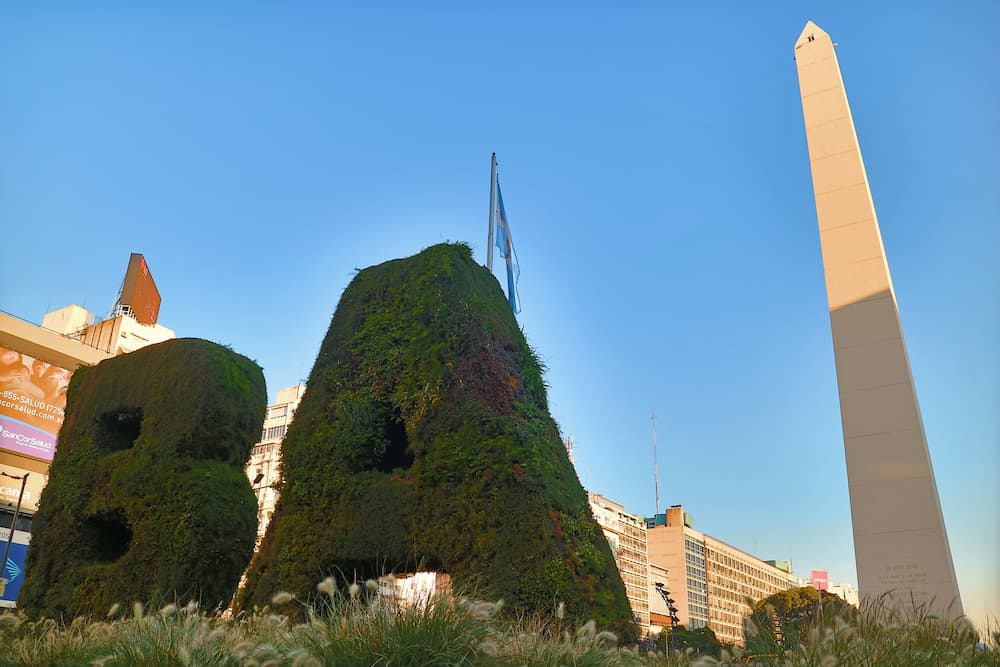Ultimate Guide to Buenos Aires
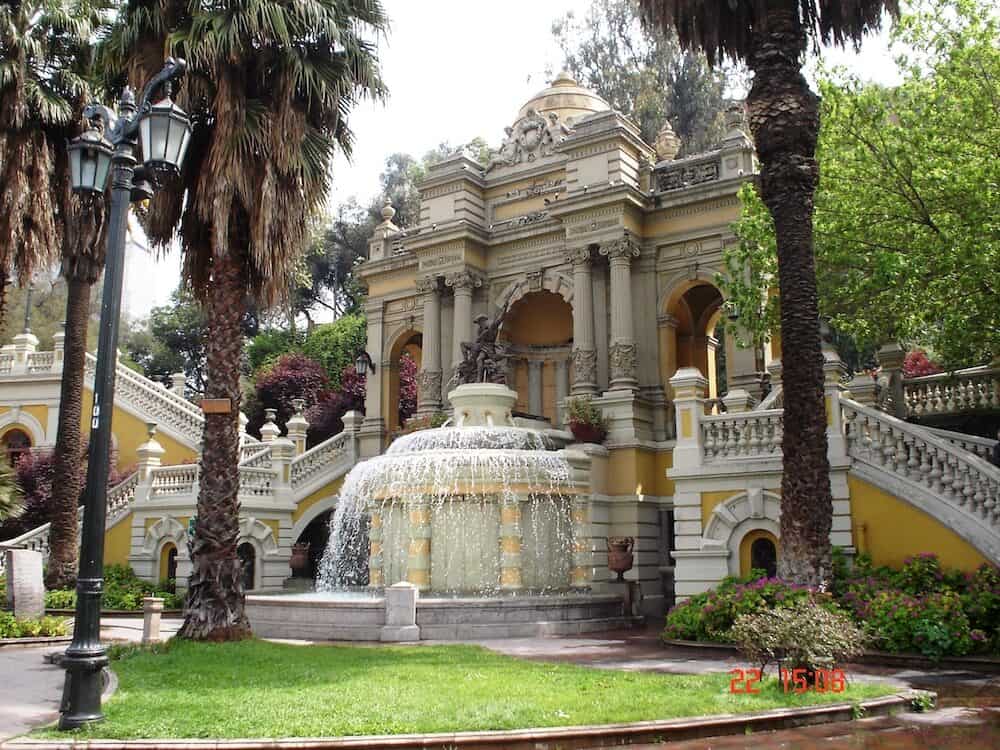
Buenos Aires, Argentina feels like it has a little slice of the world’s major cities. As you walk from neighborhood to neighborhood exploring Buenos Aires you’ll feel like you’re in a completely new city.
Locals are called even porteños or “port people”. Why? Because so many of them are immigrants or come from immigrant roots.
Buenos Aires is also located on the Atlantic coast of Argentina and is one of the most important historical ports of Latin America.
The bustling city of around 18 million people is the heart of Argentina, which is why it receives tourists from all over the world. Everyone can find their niche in Buenos Aires. It’s got traditional dance, incredible parties, unique sports, street art, and delicious food.
This Buenos Aires city guide is full of things to do, travel tips, and Buenos Aires attractions. I hope it makes planning your trip simpler.
This ultimate travel guide to Buenos Aires will show you all the most beautiful places in Buenos Aires, what to expect when visiting, where to stay in Buenos Aires and things to do in Buenos Aires which will help you in planning a trip to Buenos Aires.
Plan your trip
Save on fees abroad with the Wise Card—use it at ATMs, restaurants, and for flights or hotels in over 150 countries. Manage 40+ currencies in real-time with the Wise app.
Need Help Planning?
- Cheap Flights: Find the best deals.
- Accommodation: From hostels to luxury stays.
- Car Rental: Affordable options worldwide.
- Sightseeing Tours: Explore without breaking the bank.
- Travel Adapter: One adapter for all your needs.
- Travel Insurance: Don’t risk it—stay covered.
This post includes affiliate links. Read my full disclosure and content policy.
How to Get to Buenos Aires
By Air – Ezeiza International Airport (EZE) is the largest Buenos Aires airport. Oftentimes, it is cheaper to fly to the United States and then catch a connecting flight from New York, Miami, Los Angeles, Houston, or Dallas.
Be sure to vigilantly watch flights for a few weeks before buying your flight, as prices are constantly changing. Once you’ve landed, the easiest way to get into the city is by coach bus or taxi. Taxis are no hassle at all but will cost much more than taking a coach bus.
Tickets can be purchased when you exit customs from Manuel Tienda Leon. You can also try and navigate the public bus system, but you’ll need a SUBE card to do so.
My best travel tip is to try and snag one of these as soon as you can. More on that in How to Get Around Buenos Aires.
Alternatives? – There really isn’t a better way to arrive, unless you are already located in Argentina. That being said, each major city is still quite far by bus.
A trip from Mendoza? 13 hours. Bariloche? 22 hours. Córdoba? 10 hours. As you can see, it can be worth the extra money to fly domestically with Aerolíneas Argentinas.
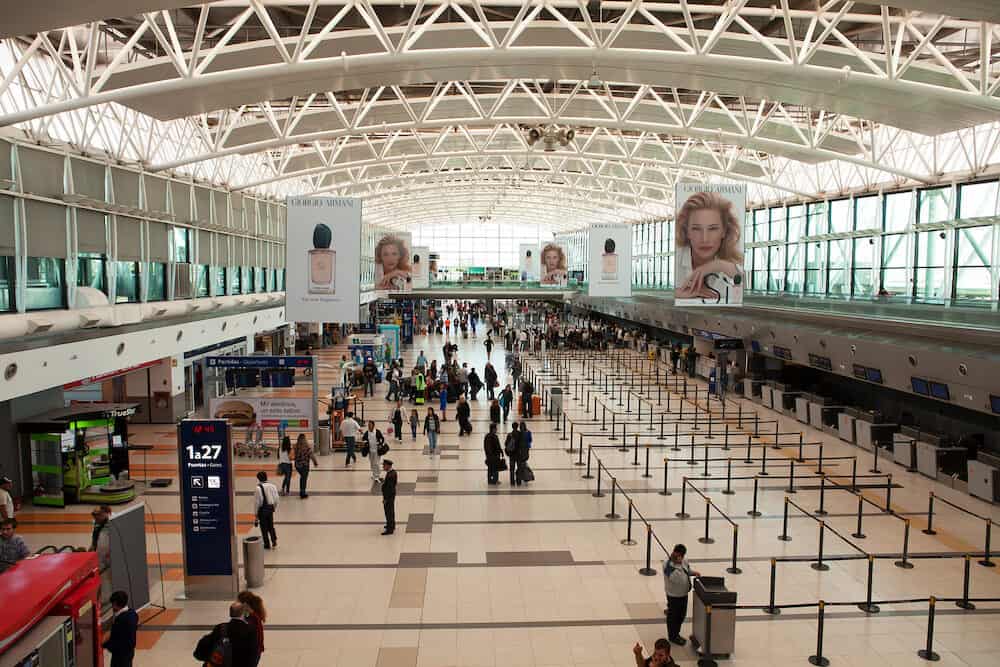
What to Expect in Buenos Aires
Language – Spanish is the main language used in Buenos Aires. Porteño Spanish is unique, especially when pronouncing the LL in Spanish.
Instead of a “Y” sound used in other countries, Argentines pronounce it with a “J” sound. A lot of the slang used by Porteños comes from other languages. Buenos Aires is a sort of hub for learning Spanish in South America.
There are a ton of different schools that offer a variety of options for students. Doing just a few hours of class will make simple exchanges so much easier.
In tourist neighborhoods, people you encounter will be likely to speak a bit of English. Don’t bank on it though! Come prepared to say your “please” and “thank you’s” with “por favor” and “gracias”.
Money – Due to the country’s declining economy, things are more affordable for foreigners in Buenos Aires. Argentina is a quite modern country.
So you’ll be surprised by the number of times you’ll be able to cover charges with a credit card. You should always be prepared to pay in cash though.
There are ATM’s all over the city. I recommend contacting your bank before traveling in order to discuss the most cost-effective way to pay for your expenses abroad.
Be aware of counterfeit money, as this is common with currency exchanges. Don’t accept a bill that is torn because they can be hard to get rid of.
Time – Porteños are night owls. Most restaurants don’t open for dinner until 8:00, which is considered very early.
Locals typically dine around 9:30 or 10:00. Planning to go out with some friends? Be sure to order a few red bull-vodkas so you can stay awake.
It’s common to see the sunrise during a night out in the city. As you probably imagined, Buenos Aires takes a bit of time to get going in the morning. Most stores open around 10:00 or 11:00.
Safety – Even though it’s large, chaotic, and a melting pot, Buenos Aires is a rather safe city. It’s important to stick to the travel rules you follow in any other major city.
Don’t walk around alone at night. Don’t wear expensive jewelry or browse your new iPhone X in large public spaces.
There are scam artists in major tourist areas, so don’t fall victim to gambling games, begging backpackers, or random people squirting sauce in your hand, (Yes, it’s a real thing) keep a close eye on your belongings and you won’t encounter any trouble in Buenos Aires.
Health – Tap water in Buenos Aires is safe to drink. In order to avoid stomach parasites, only consume meat that is served warm.
Obviously, an exception can be made for empanadas. In general, though, food is really safe to consume all over Buenos Aires. If you happen to fall ill, public hospitals are accessible to tourists.
How to Get Around Buenos Aires
By Bus – Bondis or colectivos are how most locals get around Buenos Aires. The main destinations are on the windshield, but it’s always best to ask the bus driver if he’ll pass your desired landing place.
Buses run 24 hours a day, 7 days a week, and cover the whole city. So, the quicker that you become comfortable using public transport, the easier your time in Buenos Aires will be. Don’t hesitate to ask someone to help you out.
By Taxi – It’s easy to find a taxi in Buenos Aires. The black and yellow cars swarm like bees trying to pick up tourists and locals alike.
If the sign that says ‘libre’ is alight, the taxi is available for a ride. In order to avoid getting ripped off, there are a few things you should do. First, make sure that the meter is running and working shortly after departing.
Second, carry some small coins and bills so you can pay as close to the fare as possible. Third, understand well where you need to go instead of assuming that your taxi driver will know exactly where the place is.
Taxis are a convenient, yet slightly more expensive way to get around Buenos Aires.
By Metro – In order to use the metro, or subte as porteños call it, you will need to purchase a rechargeable SUBE card.
You can find these and load them with pesos at metro stations or tourist kiosks around the city. The metro has 6 different lines that go all over the city.
Stations have wifi access, but I recommend taking a picture of the metro map so you never get caught in a bind.
By Foot – Walking is my favorite way to see a new city, and Buenos Aires is no exception. The city’s grid-like system makes navigation simple.
Plus, there are pedestrian walkways and green spaces that make it easy to get from point A to point B. I try and walk as much as possible when I’m traveling, especially when I have the time to explore a certain neighborhood well.
If you aren’t sure what to do, head to one of Buenos Aires’ popular neighborhood and get lost. I recommend using an offline map app, like Google Maps or Maps.me, to orient yourself if needed.
By Bike – If you’re planning to stay in Buenos Aires for an extended period of time, I recommend buying a bicycle. If not, figure out how to use the city’s bike sharing system.
It’s quite simple to sign up for and there is an app available to complete the entire process. You can use the bikes for up to an hour on weekdays and two hours on the weekends.
There are different stations all around the city where you can pick up and drop off your bike. Wear a helmet!
By Train – Planning to visit the river delta or do another day trip nearby the city? Use the train! Tickets are cheap and can be purchased with the same card you use to ride the busses and subte.
By Car – Don’t be too intimidated by driving in Argentina’s capital. Drivers aren’t as crazy as other major South American cities, but you should exercise caution.
The easiest place to get a rental car is at the airport. I recommend reserving beforehand online so you get the best deal.
If you’re only planning to stay in Buenos Aires during your time in Argentina, you probably won’t need a car. Public transportation is one of the best things about Buenos Aires.
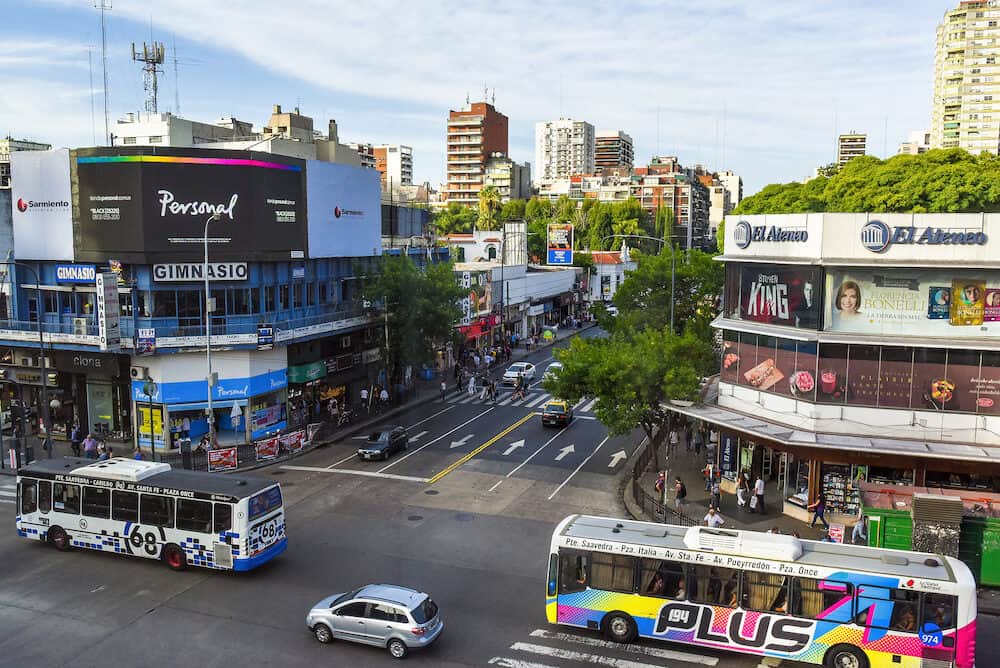
The Best Time to Visit Buenos Aires
The weather in Buenos Aires changes every month, but exploring Buenos Aires is more enjoyable during warmer months.
It’s important to plan your trip accordingly and pack appropriately. It’s best to avoid the city’s cold winter and humid summer, which is why I recommend visiting during spring or fall.
March, April, and May are the city’s fall months. The weather is much milder and crowds also aren’t as large as they can be during springtime.
Springtime, however, is an excellent time to be in Buenos Aires. Flowers are blossoming, birds are chirping, and the overall vibe of the city is jovial.
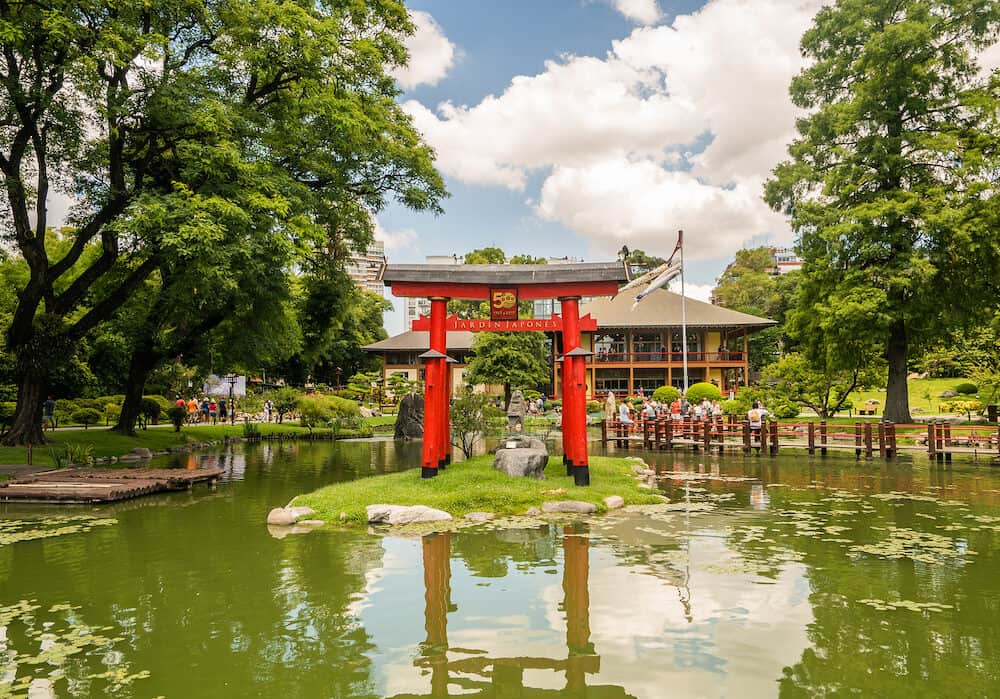
Things to Do in Buenos Aires
San Telmo Market
This market is definitively the neatest street market I have ever been to. Bop on down to San Telmo on a Sunday afternoon and check out the one-of-a-kind food, art, jewelry, clothing, and music scene.
Known as one of the largest and most unique street markets in South America, the San Telmo Feria has something that everyone can fall in love with. It’s a staple of Buenos Aires things to do lists for good reason.
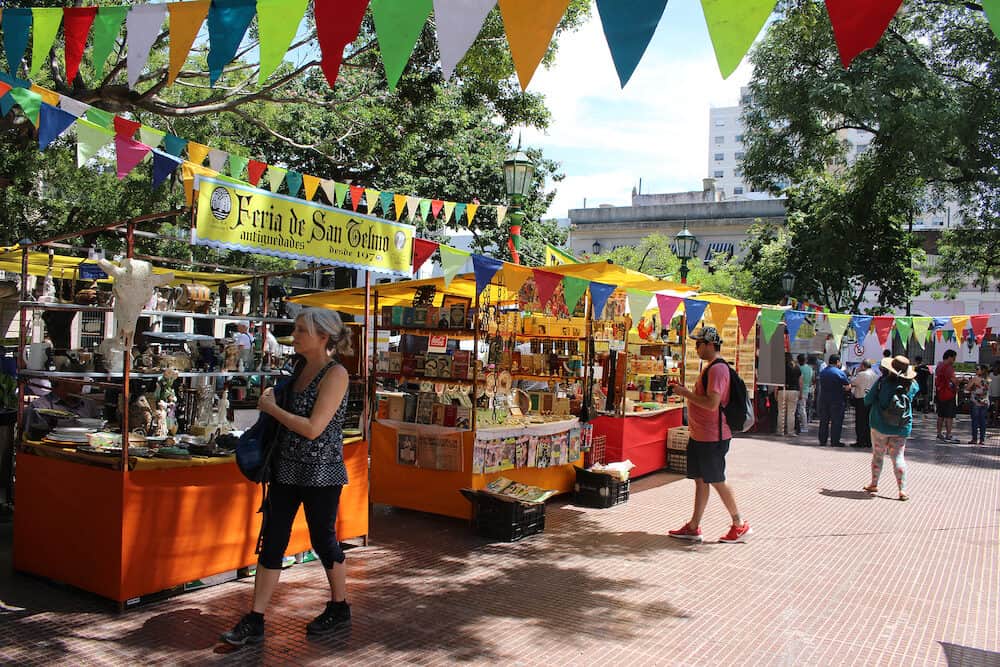
Explore Street Ferias
If you’re looking for a more low-key feria scene, Buenos Aires has some variety to offer. Palermo Soho is a nice market to walk through – never too overwhelming, but definitely a lot of unique booths to check out.
Plaza Armenia also runs on the weekends and surrounds a dog-friendly park in Palermo.
The items being sold in Plaza Armenia are much quirkier and more eccentric. Spending the afternoon/night in Plazo Serrano is another great option.
Plaza Serrano, too, is much smaller and is known for its unique jewelry. It is also worth noting that Plaza Serrano is known for its night life and bar scene.
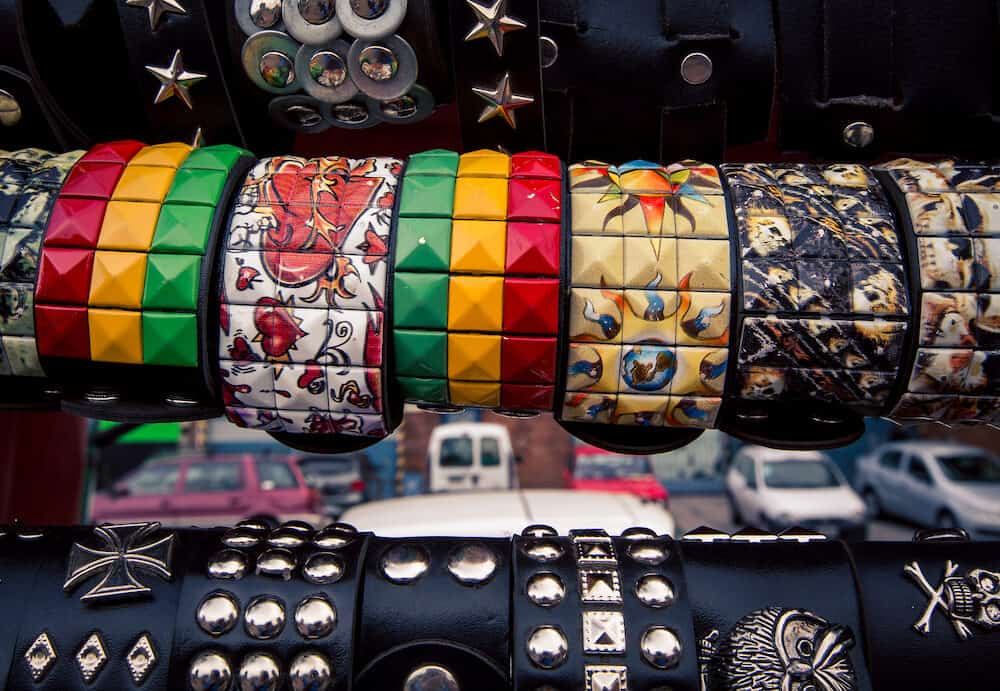
Wander around La Boca Neighborhood
La Boca is a wonderful place to spend your afternoon and one of the top Buenos Aires points of interest.
Simply walking through the streets and observing the world renown wall art and colorful architecture will keep you occupied for hours.
If you like street markets and spending your time outside in the city, don’t forget to check out the famous La Boca market or El Caminito.
Additionally, La Boca is known for its soccer team, Club Atlético Boca Juniors. Their stadium, Estadio Alberto J. Armando, is a great place for soccer fans to catch a game or to schedule a tour during the offseason.
Of course, you can’t forget about the wonderful food that this neighborhood has to offer. My personal favorite, Il Matterello, whips up some of the best Italian comida in Buenos Aires.
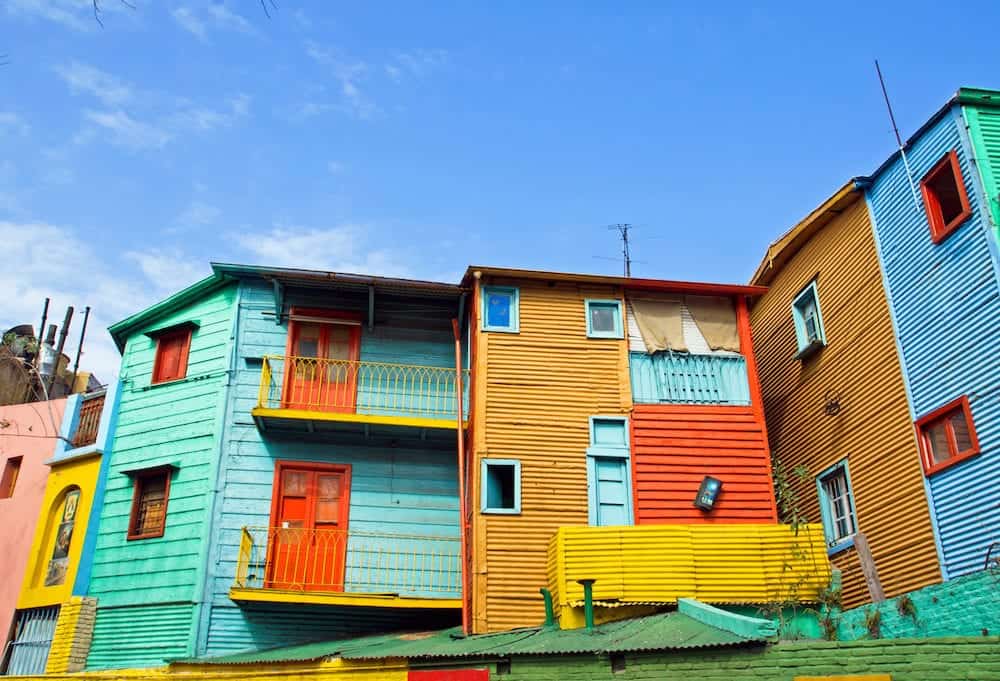
Dance Tango
Tourists can find tango dancers all throughout the city putting on impromptu shows (especially in the La Boca neighborhood).
As a courtesy, it is common to give tango show dancers a small tip, but nothing too extravagant – be sure not to get tricked!
If you’re looking for a more formal tango show experience, I would highly recommend Piazolla Tango, located in the historical Galeria Güemes.
Piazolla Tango is a Belle-Époque style theater that honors Astor Piazolla, who is known for revolutionizing tango. Spectators will be amazed by the dancing, live music, and singing.
Regardless of whether you’re a tango aficionado, or if you barely even know what tango is, Piazolla Tango is something that anyone who appreciates music and art is bound to enjoy.
Finally, if you’re wanting to learn a bit about tango yourself, schedule a lesson at the reputable tango school, Escuela Carlos Copello.
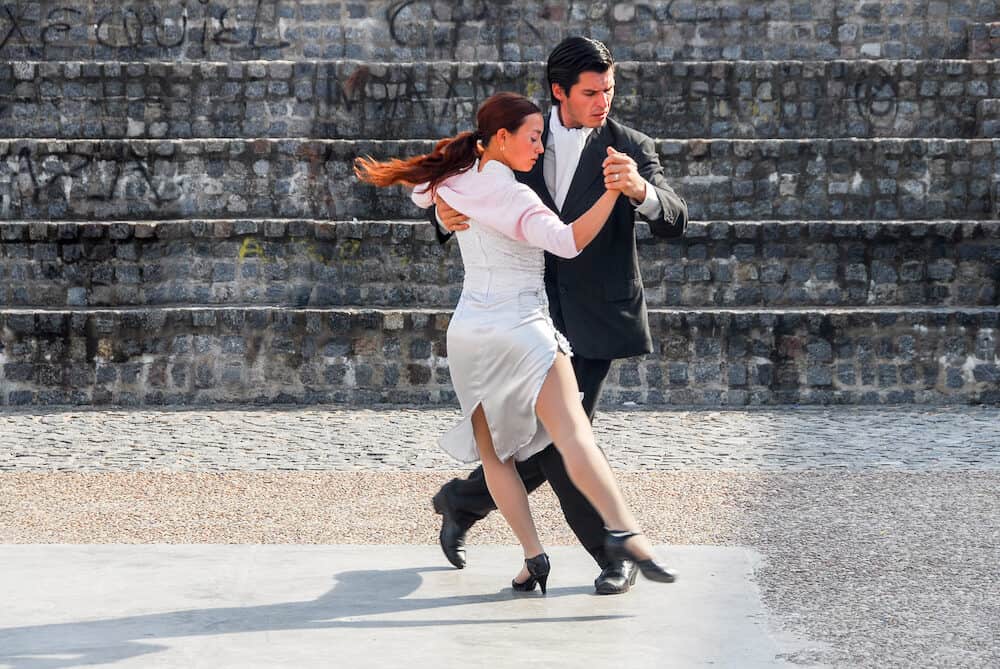
Party!
Just like many other cities in South America, the nightlife in Buenos Aires is loco. Going out is one of my favorite things to do in Buenos Aires at night.
As you will soon see, Argentines are always down for a good fiesta. People usually don’t get to the clubs until about 1 am and don’t end up leaving until right before the sun rises.
The clubs are filled with all different types of people, and everyone is having the time of their life. In terms of where to go – you really can’t go wrong. If you’re looking for a good place to start, I would recommend checking out La Catedral, Crobar, Pacha, Amerika, or Alsina.
Also, if you’re looking for some more personalized suggestions, don’t hesitate to ask your local hostel and hotel staff. Porteños also love happy hour.
Be sure to take advantage of awesome drink specials in the late afternoon/ early evening.
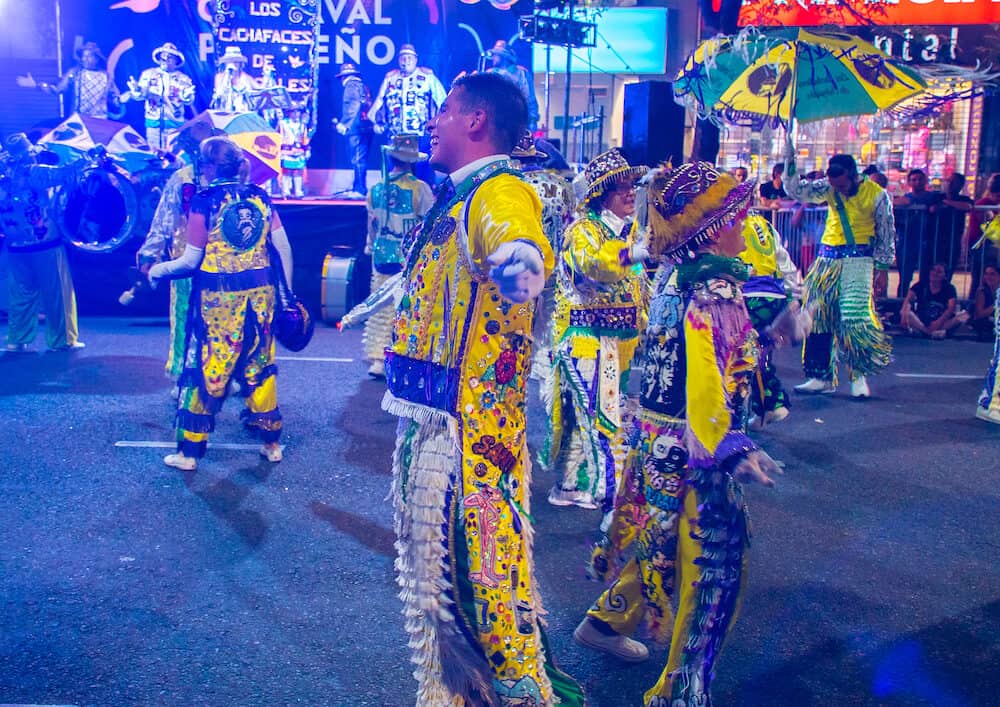
Jam to Local Music
If clubs aren’t your thing, you are bound to find a concert in Buenos Aires. Some of the bigger concert venues in Buenos Aires include Luna Park, El Monumental, and Teatro Gan Rex.
Or, if you’re looking for a more relaxed, local experience, Sofar Sounds is constantly putting on events throughout Buenos Aires.
Sofar is a very unique musical experience where local artists put on shows at locations that are revealed on the day of the show.
Check out their website at sofarsounds.com/buenos-aires. Finally, if you want to feel like a true Argentine for the night, make a reservation at La Peña del Colorado.
This venue serves fresh, authentic Argentine cuisine accompanied by live music. Teatro el Colon is an awesome place to see a concert.
This incredible concert hall opened in the early 1900s and is known as one of Buenos Aires’ most popular tourist attractions due to its grandiosity and eclectic architecture
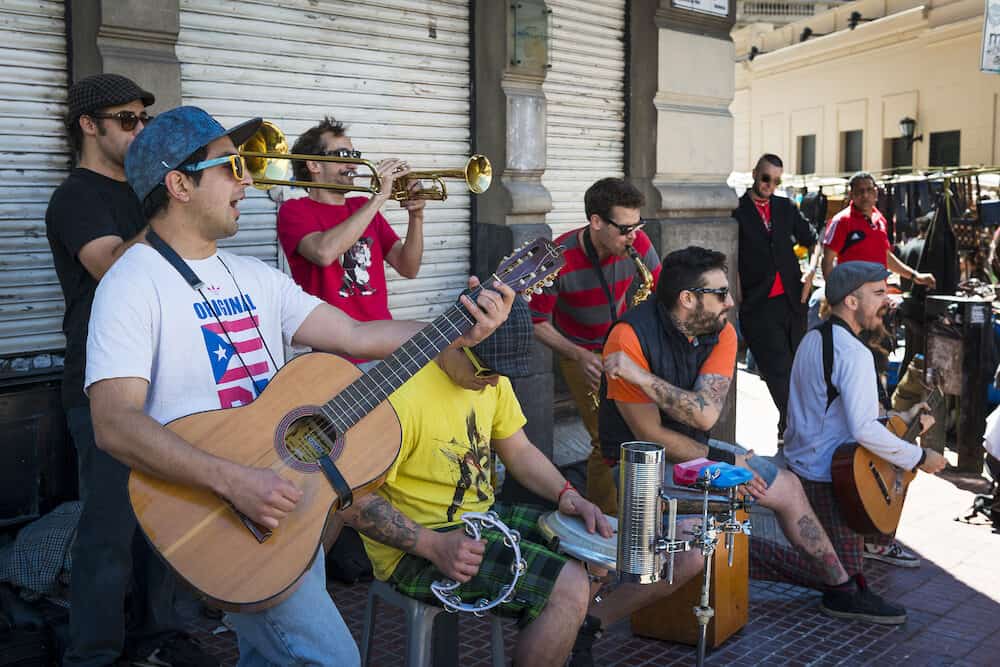
Explore Palermo’s Plazas and Museums
Palermo is considered to be the hippest and youngest neighborhood in Argentina. Hipsters from all over the country have been attracted by Palermo’s unique vibe, making it the spot to be for the locals.
On the weekends, Plaza Serrano and Plaza Armenia boast an incredible array of indie vendors selling artisanal jewelry, handmade clothes, and authentic street food.
Or, if you’re looking for chicer, modern wear, a variety of fashion boutiques can be found along Gurruchaga, Honduras, and Malabia.
Art fans should definitely check out Museo Nacional de Arte Decorativo or MALBA (the Latin American Art Museum of Buenos Aires).
Or, if you’re feeling lazy, don’t hesitate to spend the day lounging at Parque Tres de Febrero.
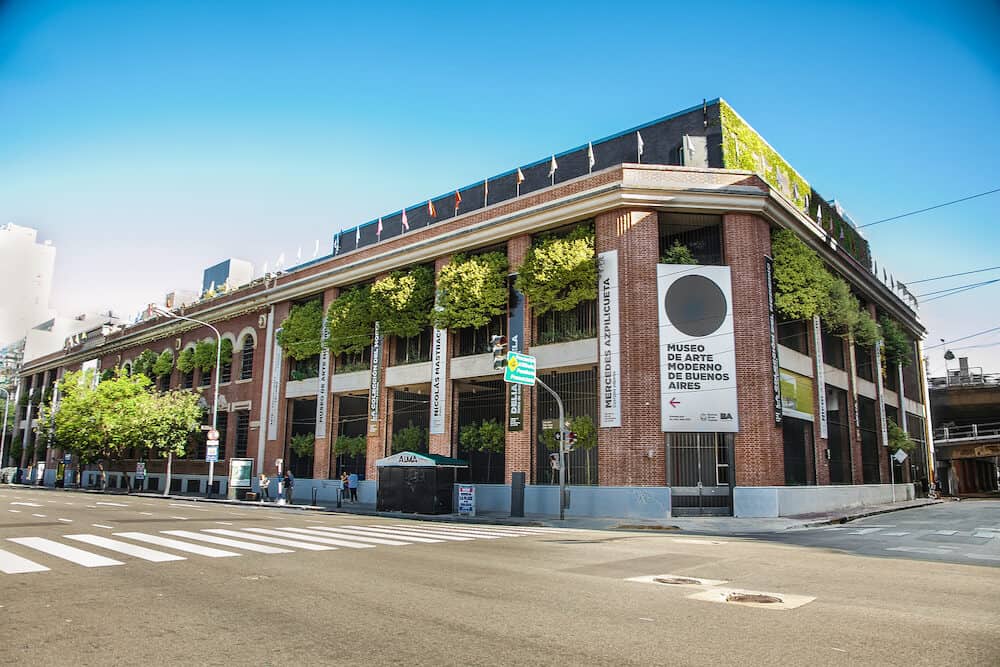
Recoleta Cemetary
A Cemetary? Really? This place happens to be one of the most unique, grandiose cemeteries in the world. I know that strolling through a cemetery might not be the top thing on your to-do list, but La Recoleta is an exception.
The site spreads over 14 acres, and only the most infamous, wealthy Argentines can be buried here. The mesmerizing memorials are bound to grab your attention.
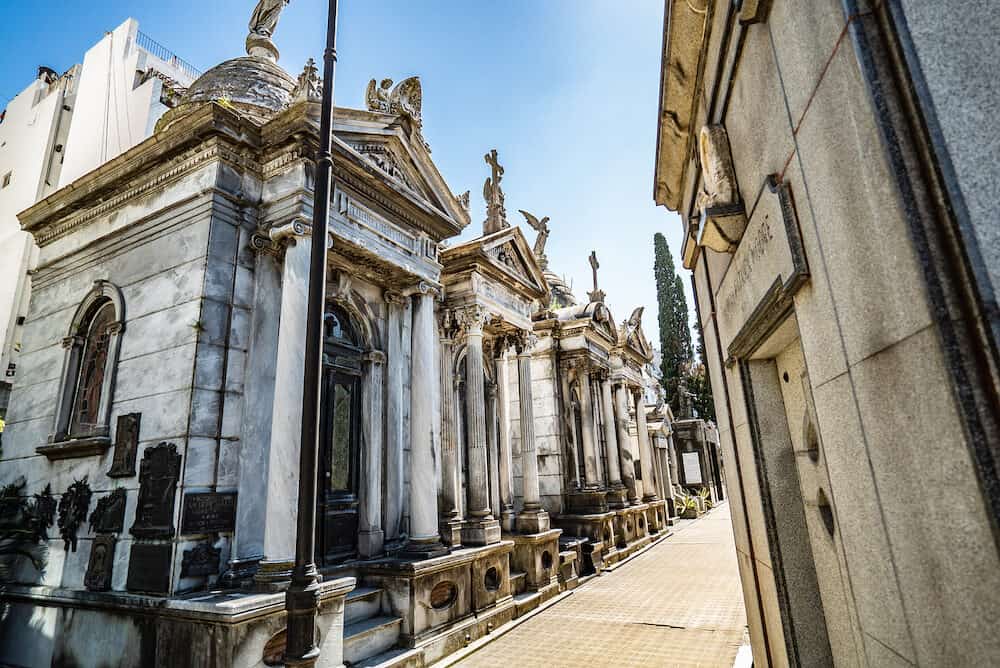
Puerto Madero
Walk through the brick streets, gaze at the skyscrapers, relax on a bench and watch the boats pass by, or check out one of the many cafes and bars that line the waterway.
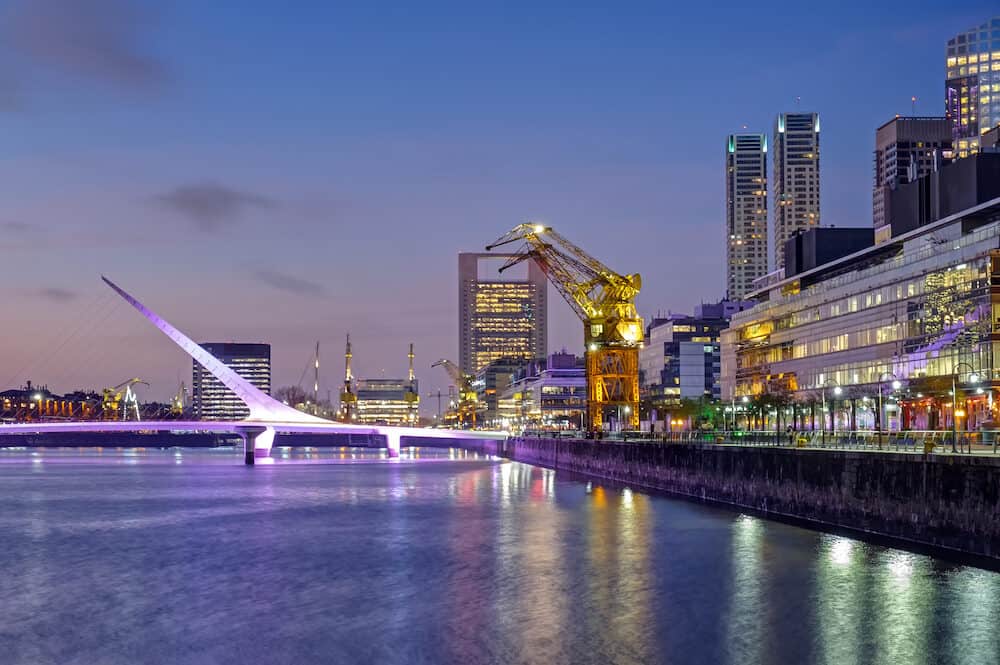
Appreciate Art
Buenos Aires is home to a vast array of street graffiti created be some of the world’s most renown street artists. There are guided tours that stop at the most popular spots, but it is also very easy to go on your own tour.
Ask your hostel hosts or google some of the graffiti routes passing through Palermo or Colegiales.
Don’t forget the reputation Buenos Aires has as “The Paris of South America”. The Museo Nacional de Belles Artes (National Museum of Fine Arts) is the best place to appreciate historical art.
This museo is a must stop for art connoisseurs. Historically, it has been nicknamed the mini-louvre for its emphasis on both European and Argentine art.
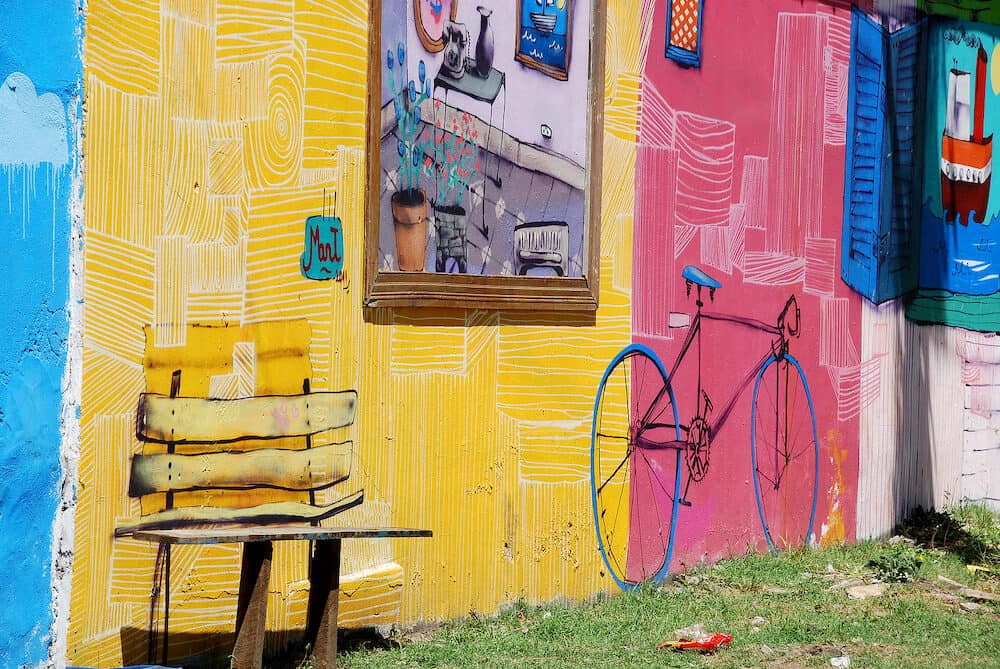
El Obelisco
El Obelisco is like the Washington Monument of Buenos Aires – it is a tall, pointy sculpture (standing over 200 feet tall) that was constructed in honor of the 400th anniversary of the founding of the city. It’s a cool place to visit, especially if you like to people watch while traveling.
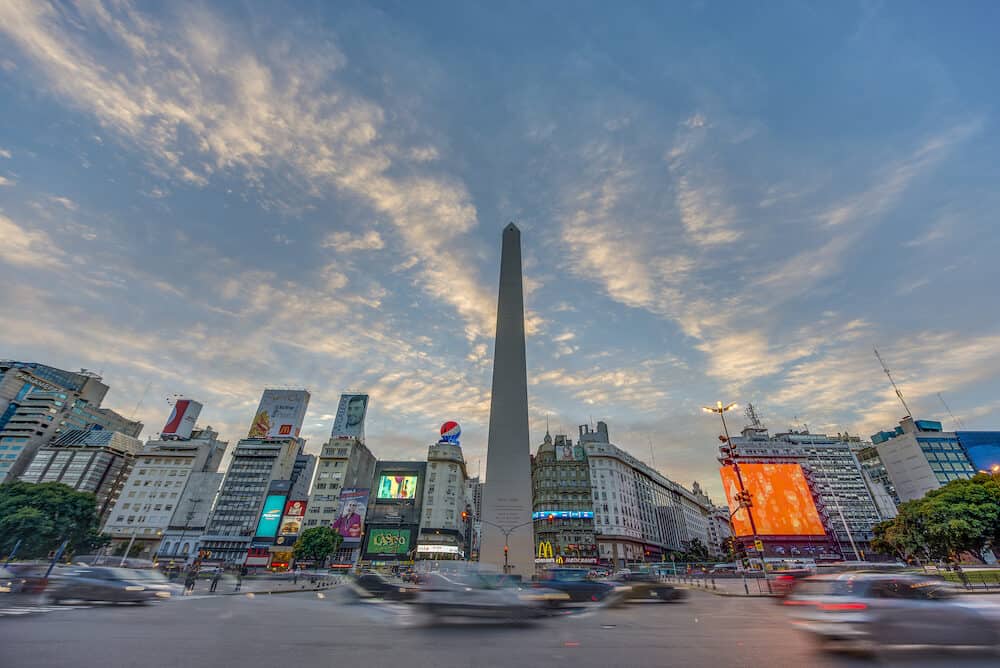
Relax in Nature
Bosques de Palermo is the park to hang at in Buenos Aires. Paddle boats and bikes are available for a small fee.
Snag a bottle of wine and some empanadas and spend the afternoon relaxing on the lawn. Another awesome green space is Carlos Thays Botanical Garden. Carlos moved to the city from his home country of France in the late 19th century.
Throughout his time in Buenos Aires, he changed the landscape of the city by designing a series of parks.
His most famous creation, the Botanical Gardens, hosts over 5,000 species of plants. Spectators will run into both unique, plant-based designs as well as an array of natural displays.
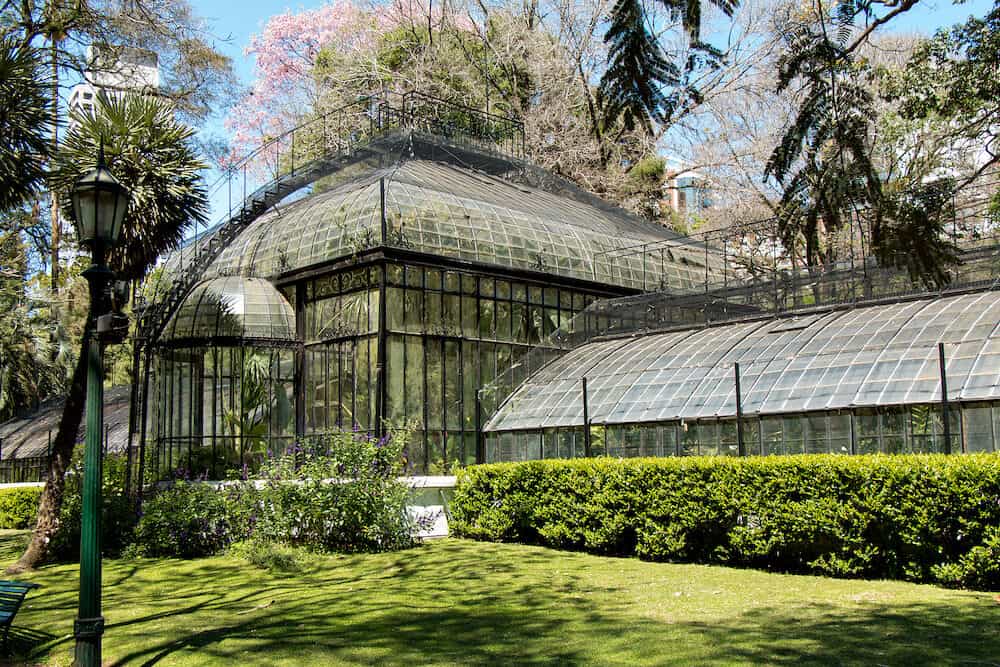
Travelling Solo?
Believe it or not, Buenos Aires is an incredibly welcoming city for solo turistas. A good place to start if you’re traveling alone would be the Mundo Lingo Buenos Aires Facebook page.
Mundo Lingo posts different bars for both locals and tourists to meet at for cervezas and conversation. They also post a lot of cheap things to do in Buenos Aires. And, don’t worry, you WILL find someone to speak English with.
Additionally, nearly all of the hostels offer resources and events for those traveling by themselves. Hostels are the perfect place to stay if you’re traveling alone as you are bound to meet others in the same situation as yourself.
I personally would recommend America del Sur Hostel Buenos Aires. This hostel is located in San Telmo, and is walking distance to bars, restaurants, and tourist sites. The America del Sur Hostel Buenos Aires is ideal for those looking for either a party or a chill place to rest your head.
The staff is accommodating, friendly, and is full of advice and suggestions on how to best explore the city.
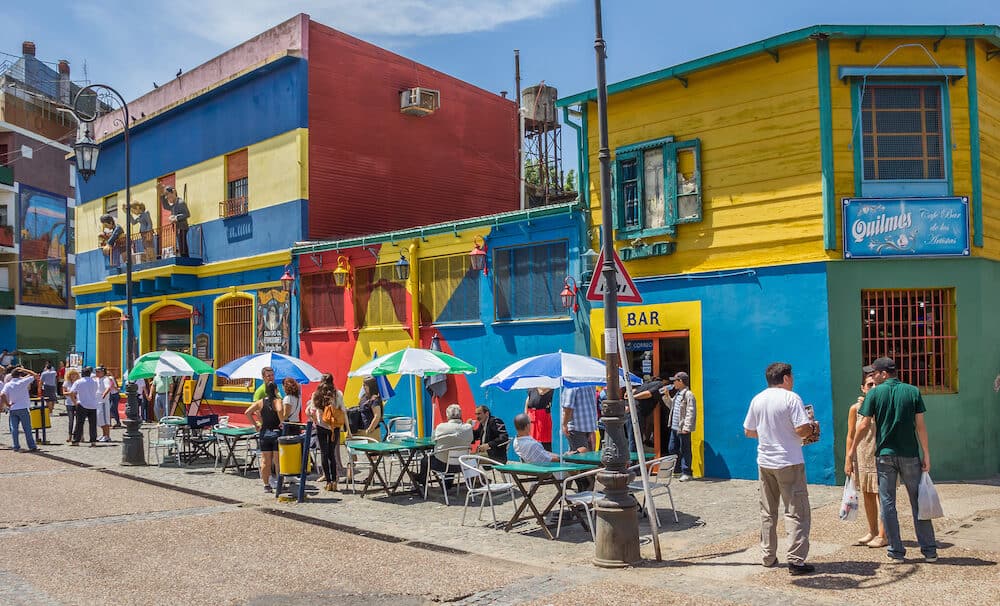
What to Eat in Buenos Aires
Empanadas – Leaving Argentina without eating an empanada is like leaving Mexico without eating a taco. These Argentine staples are found all over the place.
The dough pockets are typically stuffed with cheese, chicken, beef, vegetables, ham, and other special toppings.
They make great, easy-to-transport snacks. If you’re full, try a dessert empanada- filled with dulce de leche, jam, or cinnamon.
Carne, Carne, Carne – Argentine’s love their steak and they prepare it better than anyone in the world.
I recommend doing some research into the many different cuts– ojo de bife, bife de lomo, vacío, bife de chorizo, bife ancho, and many more.
If you’re invited to a traditional Argentine asado, don’t miss the opportunity. You’ll eat more meat than you can handle but won’t regret a single bite.
Picadas – This appetizer is a comprehensive way to sample some of Argentina’s specialties. The spread typically features a variety of cheeses and cold cut meats.
It’s commonly served at fancier, sit down restaurants, but also can accompany happy hour drinks.
Choripan – These chorizo sandwiches are some of my favorite things to eat when I am in a rush. I recommend adding some chimichurri sauce to take the flavor to the next level.
Pizza – Pizza, really? You read that right. Italians had one of the largest influences on Argentine culture and cuisine.
Pizza is found all over Buenos Aires, and you will be surprised at how flavorful and fresh it can be. Try a few different places to get an idea of just how well Argentines prepare the classic dish.

Milanesa – This breaded meat filet is another Italian-influenced dish. It could be veal, chicken, pork, or other types of meat. My favorite milanesas are smothered in tomato sauce and cheese.
Locro – If you happen to be in Buenos Aires during the winter, you can warm yourself up with this traditional Andean stew. It’s thick, filled to the brim with meat, beans, corn, potatoes, and squash.
Tamales – I’m a big fan of Mexican tamales. So naturally, I loved the Argentine variety as well. You can find sweet and salty tamales on the streets of Buenos Aires.
I prefer to eat them for breakfast, especially if I’m in a rush to get somewhere.
Alfajores – These desserts are a necessity to any Buenos Aires itinerary. There are many different types, but they always consist of a sweet filling sandwiched by two sweet cookies.
My favorite ones are filled with dulce de leche, then covered with chocolate. Keep an eye out for El Aljibe, my favorite brand of the traditional snack.
Vino – Argentina, specifically the regions of Mendoza, La Rioja, and Salta, is famous for its red wine. In fact, the country is the fifth largest producer of wine in the world.
Be sure to ask your waiter or waitress for the best wine to pair with your meal. And if you find yourself in one of the fore-mentioned regions, do a vineyard tour. You won’t regret it.
Maté – Why do so many porteños carry a huge thermos around? To drink maté of course. This special tea, grown in Northern Argentina, is a great way to start your morning.
The culture of drinking maté is social, and I recommend asking locals about the norms before diving into your first fill. The stuff is bitter, addicting, and full of caffeine.

Where to Stay in Buenos Aires
Palermo
Palermo and its different sub-neighborhoods is my most recommended place to stay at in Buenos Aires. Palermo Soho is the coolest place to be located.
Plus, you’ll be nearby some of the best restaurants, bars, and cafés that the city has to offer.
In Palermo, there are plenty of accommodation options, from hostels to luxury boutique hotels. Airbnb is booming in the city now, and I recommend staying with a local if you want to have a true porteño experience.
Recoleta
If you want to be located nearby a lot of cool tourist things, I recommend staying in Recoleta. The neighborhood is very walkable and in a central location, making it an excellent base for your Buenos Aires adventure.
Places here are a bit more expensive, but the neighborhood is also host to some of the coolest Buenos Aires hotels. However, the money you spend will have its return with a luxurious experience. I highly recommend checking out the Four Seasons.
Belgrano
Belgrano is a very densely populated, more residential area of Buenos Aires. Some porteños may think it to be sketchy, but I found the grungier vibe appealing.
If you really want to dive deep into authentic Argentine culture, I’d recommend staying here. The neighborhood is perfect for people staying in the city for an extended period of time.
The neighborhood is diverse, the type of place where cobblestone streets lay adjacent to massive modern skyscrapers.
Puerto Madero
This one of the newest neighborhoods in Buenos Aires, which is quite noticeable from the first few steps you take in the neighborhood.
What used to be an industrial center of the city is now home to many upscale Buenos Aires hotels and restaurants.
If you got the money for it, I’d recommend staying in one of the fancier places here. Keep your head held high if you want to blend in with the most prestigious porteños.
San Telmo
Because a lot of Buenos Aires sightseeing is done here, you may feel an urge to book a hotel or hostel here as well.
I’d recommend not doing so. Places tend to be overpriced and the neighborhood gets sketchier as the hour gets later.
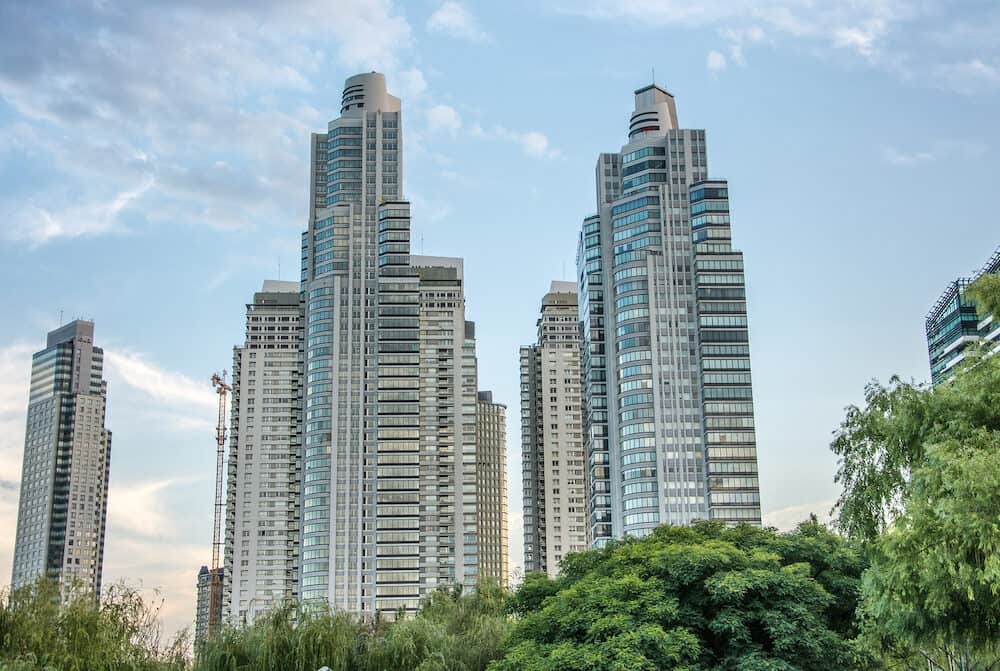
Tours to do in Buenos Aires
The Argentine Experience: Empanada Making, Steak, Wine, Alfajores and Mate
This is a 3.5-hour dining experience where you will get a taste of the local cuisine. When you arrive you will first get a Malbec wine-based cocktail.
You will then have dinner consisting of a variety of food from Argentina including Argentinas best steak, bife de lomo.
The food might include the famous chorizo and grilled provoleta cheese. The food is accompanied by four boutique wine.
You will finish by learning how to make a traditional tea (maté) which you will take with Argentine dessert (alfajores).
Small-Group Buenos Aires Graffiti Art Tour
During this 3-hour minibus tour, you will visit the city’s prolific street art. This tour is organized in collaboration with some of the leading artists.
So you will meet them and be able to purchase some affordable artworks. You will explore Palermo, Colegiales, Chacarita, and Villa Crespo neighborhoods.
You will learn about the political and cultural meanings of the artworks. You will also visit graffiti hotspots, open-air galleries, and the only street art bar in the city.
Buenos Aires Cooking Class
This is a 4-hour culinary class where you will learn how to cook traditional dishes. The class will take place in a local chef’s home kitchen.
The chef will first describe the ingredients that will be used. You will then begin to prepare the traditional dishes. For the appetizer, you will prepare Argentine empanadas while learning how to fill the dough.
For the main course, you will prepare stew using a contemporary recipe to give it a different flavor.
The dessert will be Dulce de Leche and Rum Semifreddo prepared with classic ingredients. After preparing the dishes you will enjoy the meal accompanied by Argentine wine.
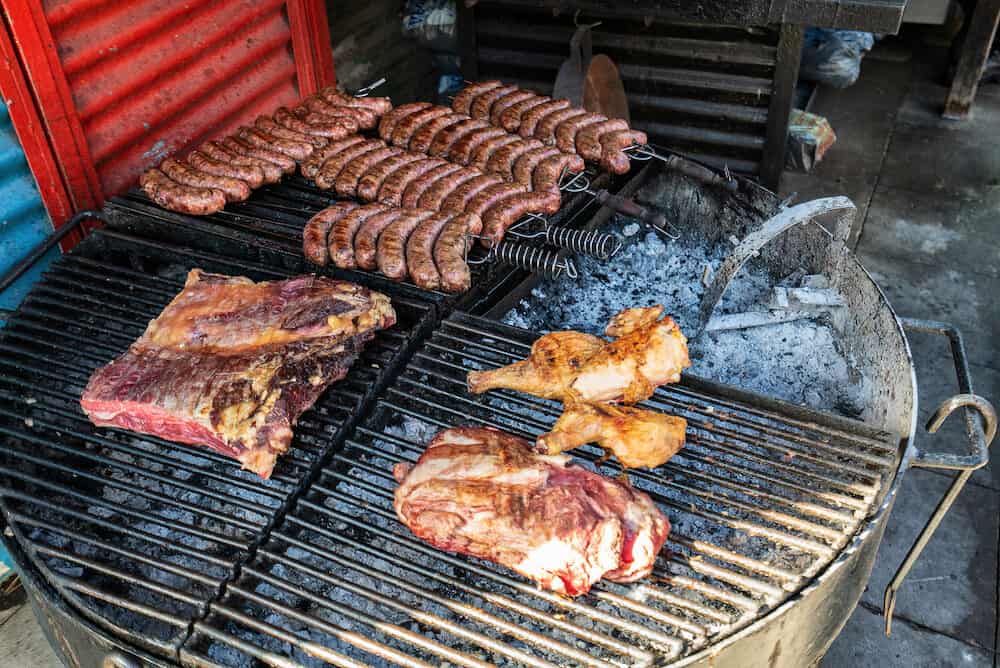
Day Trips from Buenos Aires
Day Trip to Montevideo from Buenos Aires
For those looking to check out as many different places and countries as possible, Montevideo should be your first stop if spending some time in Buenos Aires.
A ferry from the city leaves in the morning and cruises down the River Platte. Montevideo is an awesome city for foodies, shopaholics, and chillers wanting to grab a drink with a waterfront view.
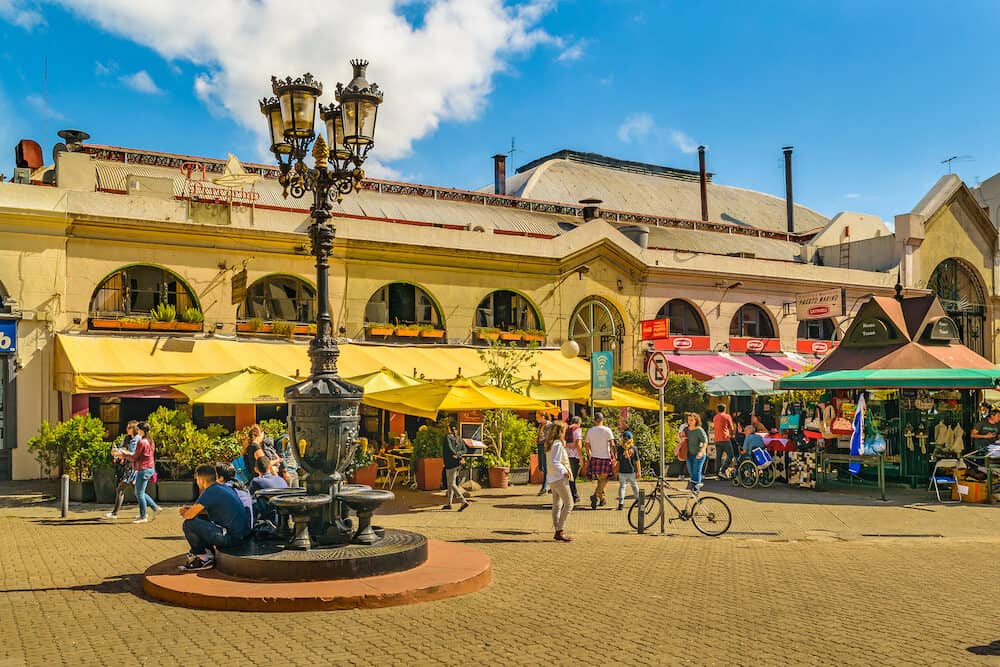
Polo Match and Lesson Day Trip from Buenos Aires
This is a 9 hours polo experience from Buenos Aires. Your guide will give you an introduction to polo during your 45 minutes journey to the country club.
At the country club, you will learn about Argentina’s passion for polo and the top players. You will also learn about the breeding program that ensures that the polo horses are exceptional.
You will then watch a live polo match that will involve 30 horses. Then you will have lunch and after lunch, you can walk the grounds or swim at the country club’s pool.
You will finally have your polo lesson where you will engage in a mini-match with your fellow travelers.

San Antonio de Areco and Lujan Day Trip from Buenos Aires
Lujan is a small city sitting just north of Buenos Aires. Lujan is home to Argentina’s most classic architecture.
If spending the afternoon here, don’t forget to check out the local restaurants and steak houses. In Santiago de Areco, you will get a taste of the Argentine cowboy or gaucho culture.
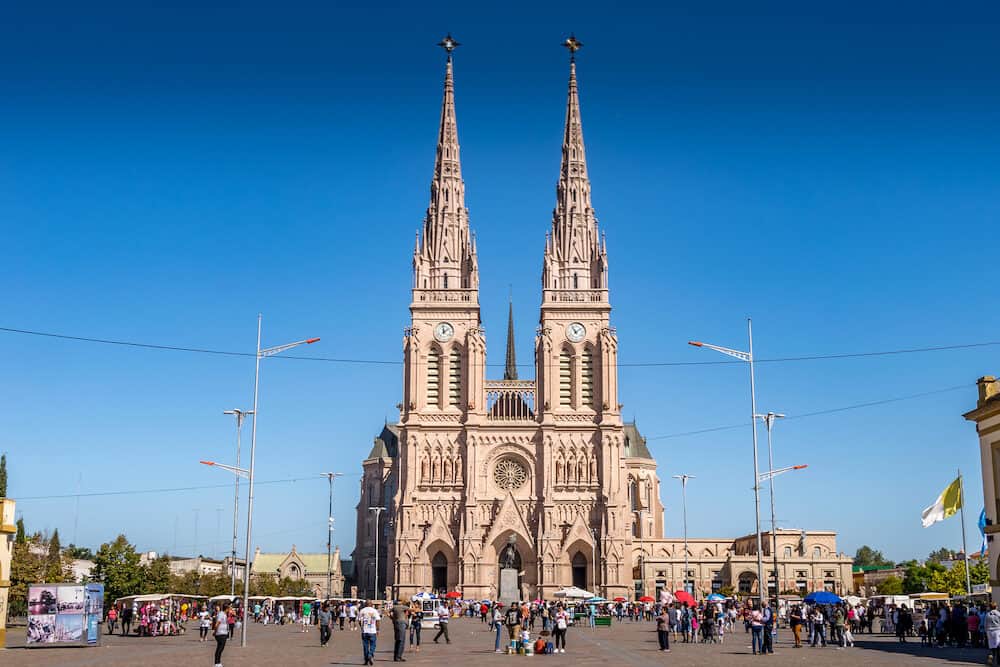
Iguazu Falls Private Day Trip from Buenos Aires with Airfare
During this private full-day trip you will visit Iguazu National Park. You will first have a two hours flight then a drive to the waterfalls.
At Iguazu National Park entrance you will skip the line then head to Nature Interpretation Center. Here you will learn about the parks’ foundation.
Then you will board the park train and stop at Cataratas Station. In the afternoon after resting, you will take a train to the Garganta del Diablo Station.
This is where you will see, Garganta del Diablo (The Devil’s Throat), the biggest fall in Iguazu.
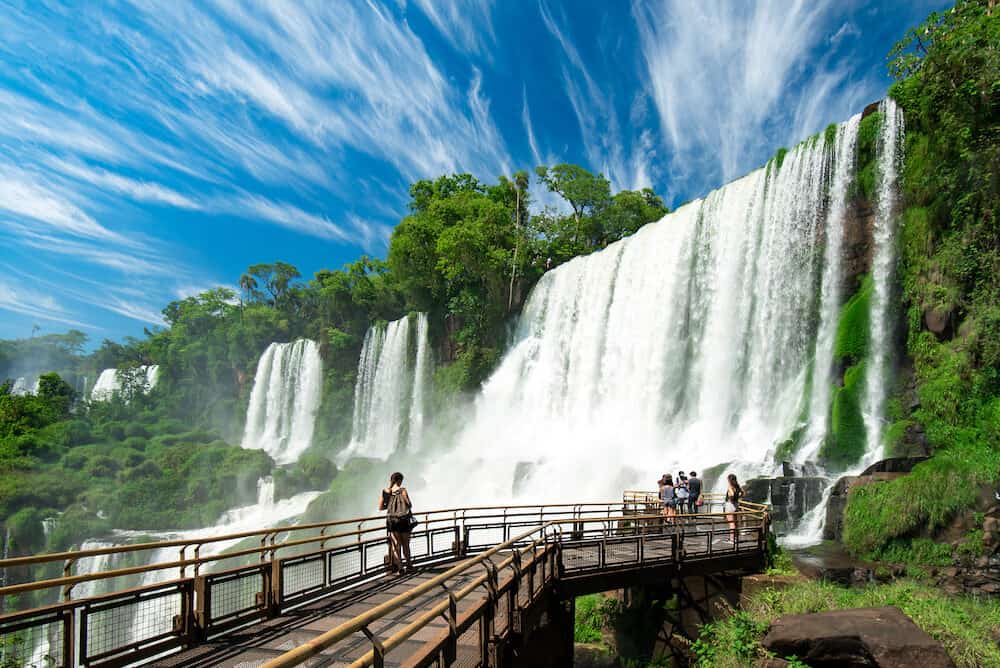
Colonia del Sacramento from Buenos Aires
By simply hopping on a ferry you can land in Colonia de Sacramento, Uruguay. The cobblestone streets and traditional architecture will make you feel like you’re living in the past century.
This tour is a great way to experience the Rio Plata, one of the most important waterways in South America. It’s also a good way to get a peek into Uruguayan culture.
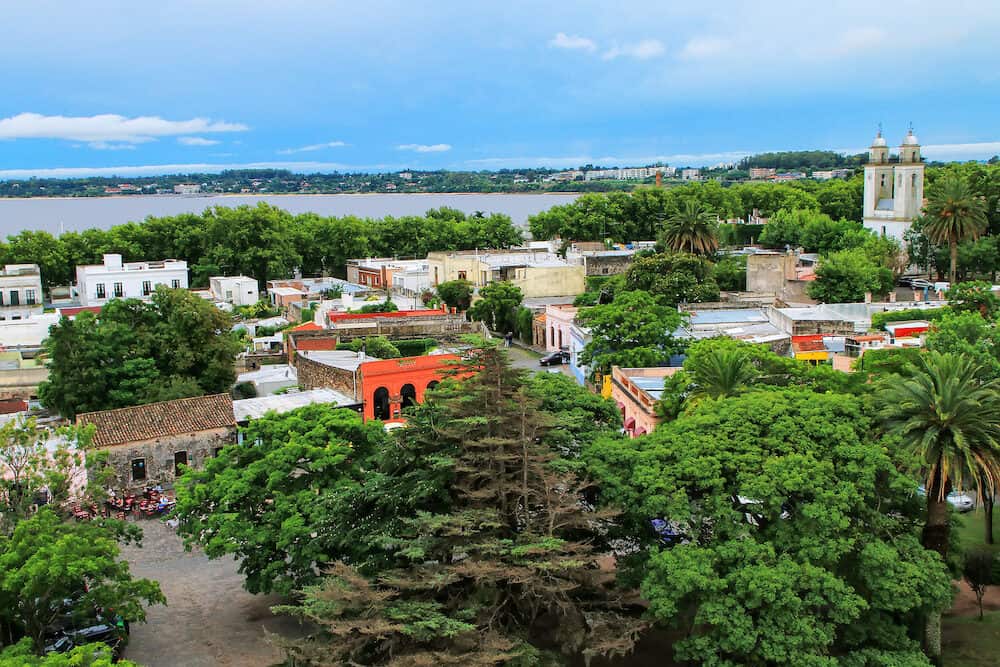
Tigre Delta Sightseeing Cruise from Buenos Aires
This is a full-day tour where you will spend the day on the water. The tour will start from San Isidro by motorboat. You will sail along Rio de la Plata river and stop to either swim or kayak.
You will then have lunch and continue to your first stop at Delta El Tigre. At Delta El Tigre you will cruise around the nature reserves and canals.
You will also discover the many islands and the inhabitants. You will finally visit the oldest church (Catedral de San Isidro).
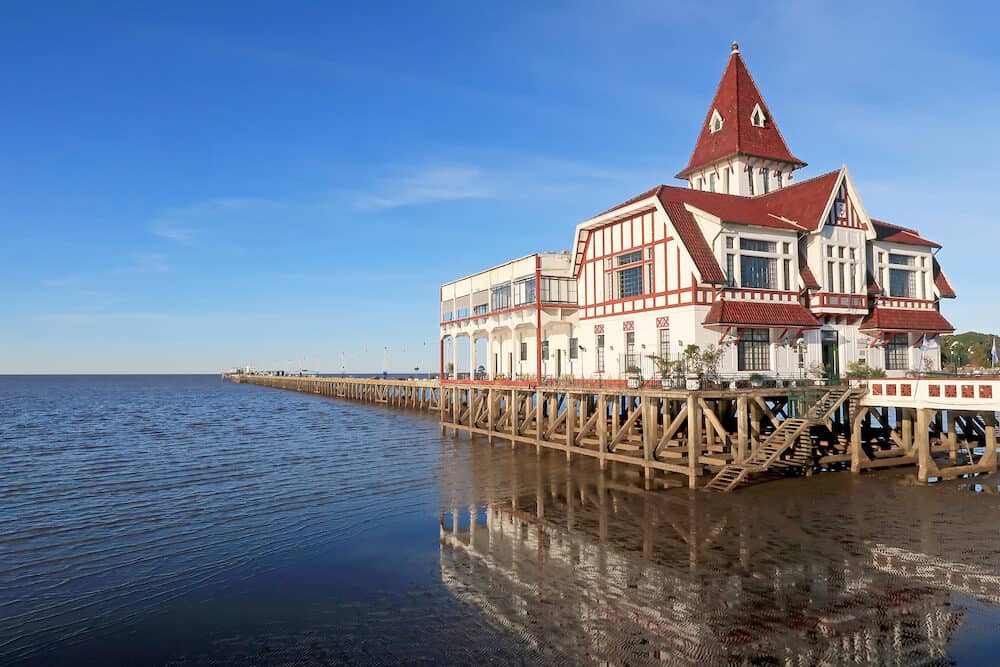
Regardless of what you decide to do, you will absolutely love your time in Buenos Aires. This city is a must stop for any type of traveler. If you’re looking for art, food, or culture, you will find it here.
If you’re looking for a party, you will find it here.
If you simply want to better understand the Argentine way of life, you can do that in Buenos Aires as well. Enjoy the viaje, amigo or amiga – you won’t regret it!
Recommended tours in Buenos Aires
- Rojo Tango Dinner and Tango Show including Private Transfers
- Gaucho Day Tour Ranch in San Antonio de Areco from Buenos Aires
- The Argentine Experience: Empanada Making, Steak, Wine, Alfajores and Mate
- Small-Group City Tour of Buenos Aires
- 7-Day Salta & Atacama: Humahuaca-Purmamarca, Cafayate, Moon Valley, Tatio Geyser
- Small-Group San Isidro and Tigre Delta Tour
- Buenos Aires Small-Group Wine Tasting
- Buenos Aires Super Saver: City Sightseeing Tour, Tango Show with Dinner and Tigre Delta River Cruise
- Buenos Aires Bike Tour: Recoleta and Palermo Districts
- Small-Group Buenos Aires Graffiti Art NorthTour
If you’d like to save it for later, please save it to Pinterest.

